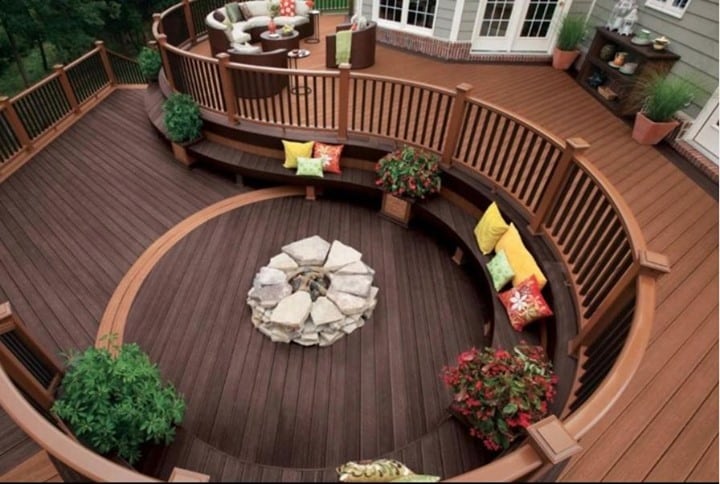
Creating a Poolside Paradise: Must-Have Features for Your Pool Landscape


By Ed Ball | Published on October 18, 2021 | 2 min read

If you’re a purist, you may think that wood decks are the only way to build. They are natural, offer many choices in wood types and finishes, and materials are readily available. With that said, composite decking offers many styles and finishes, but lasts years longer than wood.
Composite decking has come a long way since it was introduced, and there are more options than ever before. Composite components are made from recycled materials and are constructed to be resistant to moisture, fading, warping and splintering. As a result, these systems last decades longer than traditional wood decking and require virtually no maintenance.
Composite decking and railing systems offer versatility and durability when considering a new outdoor space or replacing an existing deck. No matter your vision, composite systems paired with an experienced contractor will create an outdoor space that’s not only durable, but also beautiful.
Some additional benefits:
Composite solutions will be more expensive to install, but the cost-benefit in the long run makes synthetic systems an intelligent investment. Contractors must be proficient in composite solutions, and you may find they specialize in one brand over another. If you are acting as your own contractor for your deck, be sure to talk to multiple installers and get bids in writing.
In terms of design, composite systems can meet the high creative standards of landscape architects and designers. Be sure to communicate your goals for the space and how you intend to use the area with your designer and project team. Collect inspiration photos, consider lighting requirements, seating options, and access as you design your ideal deck.
Your designer should also be asked to explain the potential cons for using composite in your design. For instance, composite can be hot on bare feet and might not be suitable for a pool surround. And no matter how far composite systems have come, they fall short of fully emulating natural wood.
Always put your goals first and collaborate with a landscape designer to make your vision come to life using the best products for the job. With composite systems vastly improved over the years, it’s nice to have a durable, low-maintenance option to consider!